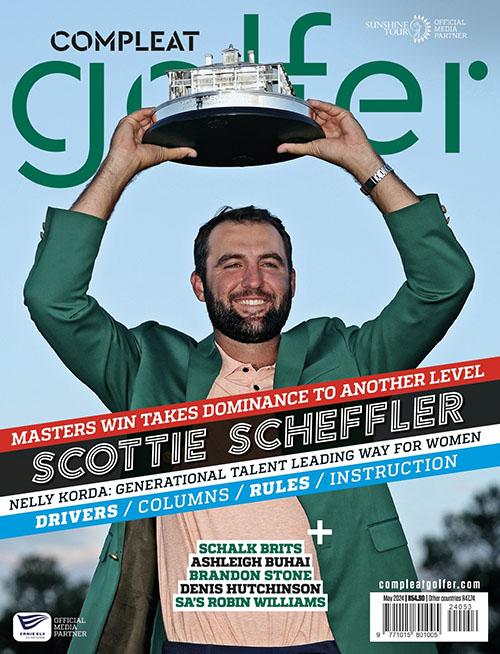When it comes to the rules of golf, I’m all for simplification, writes ANDY CAPOSTAGNO in his monthly hackers column in Compleat Golfer.
If you can’t explain a situation in a couple of sentences, you’re probably going about the game in the wrong way. I was reminded of this by Frank Thomas, who wrote recently that the ban on anchored putters resulted in a lengthy synopsis by the R&A that addresses all the wrong issues. I looked it up and he’s right.
The actual change to rule 14-1b that came into effect on 1 January 2016 is fairly simple. But it takes the R&A seven pages of text and illustrations to explain exactly what they mean. They even go so far as defining what they mean by a ‘forearm’, and you may be surprised to know that according to the R&A, the forearm includes the wrist.
The clarifications ramble on and the illustrations get more and more bizarre, but nowhere does the R&A get around to talking about why they think anchored putting is a sin. So I’ll have to take a flying leap of faith and state that anchored putting is a sin because it looks bad. By which I mean that if it is out of kilter with the way you use every other club in the bag, something is wrong.
In other words, whether you use the interlocking grip, the overlapping grip, the motorcycle grip or variations of all three, when hitting the ball your hands are together on the shaft. If you putt by separating your hands, you’re doing it wrong. If you don’t believe me, try hitting a drive while holding the club like you would a broomstick or belly putter.
So Frank’s rather ingenious solution is to say that the length of the putter shall be no longer than the shortest club in a player’s bag. If you then want to separate your hands and balance your chest or belly on top of the shaft that’s up to you, but you’d probably have to kneel down to do it, and it probably isn’t going to improve your putting.
I like Frank’s suggestion because it’s simple, although there was a time in my life when it would have played hell with my own game. That’s because I used to carry two clubs that were only a foot long: a sand wedge and a putter. They were both painted bright yellow and conventionally gripped, and I had inherited them from a couple of media excursions to the Lost City.
Back in the mid-1990s, Nick Price was briefly ranked No 1 in the world. One of his many sponsors invited the golf media to the Pilanesberg to watch Nick play an exhibition round. Our memento of the day in year one was the putter, in year two it was the sand wedge.
Now, I have no idea what my colleagues from the fourth estate did with theirs, but I put mine in my bag and used them. There were relatively few occasions when I needed the putter, but the sand wedge came out regularly to deal with bad lies and restricted swings.
Once, while playing at Randpark, I used it to flip the ball out of the roots of a tree, whence it looped over a greenside bunker and ran up to six inches from the hole. I completed the par with the cut-down putter.
From a kneeling position, naturally, but with both hands together on the shaft.
Separating them would have felt like cheating.
– This column first appeared in the October issue of Compleat Golfer, now on sale







